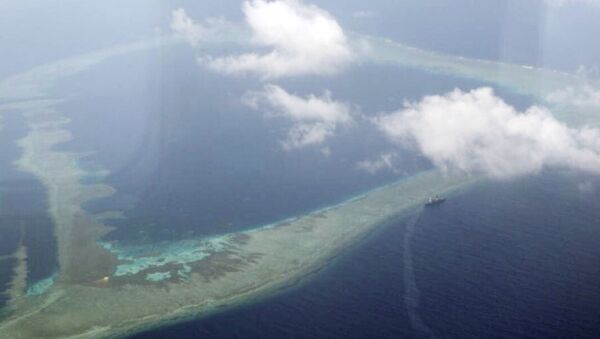The USS Decatur, a guided-missile destroyer, sailed within 12 nautical miles of the Gaven and Johnson reefs in the disputed Spratly Islands, Reuters reported on Sunday, citing two US military officials.
The warship reportedly sailed within the distance that is considered territorial waters under the "freedom of navigation" program that challenges Beijing's territorial claims in the South China Sea.
"US forces operate in the Indo-Pacific region on a daily basis, including the South China Sea. All operations are designed in accordance with international law and demonstrate that the United States will fly, sail and operate wherever international law allows," a US military official told CNN earlier in the day.
READ MORE: US Flies More B-52 Bombers Near Disputed Territories in South China Sea
The South China Sea is one of the world's most sensitive areas. Beijing's extensive territorial claims to the sea, which include islands, banks, reefs, and maritime ways, are challenged by Vietnam, Malaysia, the Philippines, Brunei and Taiwan, which also have counter claims. Beijing has built installations at strategically located islands in the region, which is considered to be rich in natural resources and also handles some $5 trillion in annual global trade.
The US has accused China of building artificial islands in the region and of constructing facilities on the contested islands, voicing concerns that they could be used to restrict free movement and broaden Beijing's strategic reach.
Washington says that the waters adjacent to China-reclaimed islands are still international waters; it sails its warplanes and warships through these waters as part of so-called "freedom of navigation" operations to get its point across.
In one of the latest instances, the US Navy sailed two warships within 12 miles of four of the Paracel Islands in the South China Sea in May. In March, the USS destroyer Mustin also came close to Mischief Reef in the Spratly Islands, drawing condemnation from Chinese officials.
Sunday's operation came as another development in mounting tensions between Beijing and Washington over diplomacy and trade. This week, US President Trump accused Beijing of seeking to meddle in the upcoming November midterms in the US, which China denied.
This added up to a high-profile trade rift growing across the Pacific. Earlier this week, China hit back at Donald Trump's $200 billion of new tariffs with its own levies on $60 billion of American product.
Trade between Beijing and the US went into a downward spiral of tit-for-tat measures ever since Donald Trump announced import tariffs on steel and aluminum, citing national security concerns and claiming that China was stealing US technology and intellectual property.



